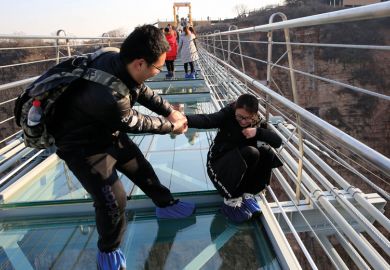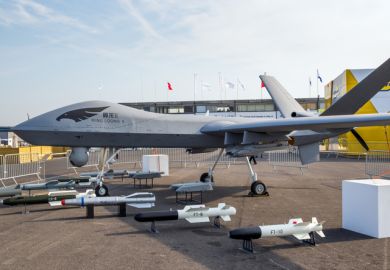In what has been heralded as the biggest Chinese-Australian joint venture of its type so far, a Sydney university has signed a A$100 million (£51 million) deal to develop and commercialise medical devices, renewable energy systems and “additive” manufacturing techniques.
UNSW Sydney has signed the five-year deal with the Qingdao International Academician Park (QIAP), an innovation precinct established three years ago in China’s self-proclaimed “sailing city” of Qingdao.
Under the arrangement, QIAP is bankrolling a multistorey building to house the new UNSW China Advanced Technology Industrial Research Institute, which is scheduled for completion by April. UNSW is supplying research leaders, advancing patents for commercialisation and providing back-of-house support through professional staff based in Sydney.
UNSW is the majority shareholder through its commercialisation arm, NewSouth Innovations. The institute will generate internship and research opportunities for UNSW PhD students and academics.
It will also fund stipends and research costs for up to 100 Chinese students undertaking UNSW doctoral studies.
UNSW deputy vice-chancellor Nicholas Fisk said that Qingdao – a port city on the Yellow Sea coast, roughly halfway between Beijing and Shanghai – was a “hotbed” of commercialisation.
He said that discovery science for the new venture would be undertaken “largely but not exclusively” in Sydney. Development and translation would occur mainly in Qingdao, piloted by QIAP “in concert with the huge number of commercial partners they seem to have.
“Our preliminary talks there have led to lots of exciting possibilities. These days, research is no longer a sole-trader activity. It’s multidisciplinary and international collaborations, and you go where the best minds and facilities are.”
While QIAP works with scores of “academicians” – members of national learned academies – from around the world, UNSW says that its deal is the first institutional-level agreement. The coup comes three years after the university won the right to set up the first Torch Innovation precinct on foreign soil, securing branding rights from a scheme that is run by China’s Ministry of Science and Technology and credited with generating about 8 per cent of China’s gross domestic product.
The new institute also follows Monash University’s announcement this year of a 10-year A$100 million deal to set up the Monash Technology Transformation Institute in China’s southern innovation hub of Shenzhen.
Professor Fisk said that the focus areas for the latest joint venture – biomedical engineering, renewable energy and advanced manufacturing – were fields where UNSW research strengths coincided with Qingdao’s needs. He said that the medical devices slated for development included wearable sensors to help manage diabetes, monitor sunlight exposure and prevent falls among older people.
Renewable energy technologies included storage of hydrogen for fuelling vehicles, while advanced manufacturing techniques included new ways of developing lightweight carbon composites for infrastructure and transport. “These are not military applications at all,” he said. “They’re not dual-use technologies.”
Professor Fisk said that the deal had been the “first cab off the rank” for the new University Foreign Interference Taskforce guidelines released in November. He said that Australia’s security agency ASIO, the Department of Foreign Affairs and Trade and the Department of Education had helped assess the deal.
“That’s been very important in ensuring it’s all upfront and the appropriate safeguards are in place,” he said. “We were very conscious, given the geo-realpolitik sensitivities, to work with the government and agencies on this.”
Register to continue
Why register?
- Registration is free and only takes a moment
- Once registered, you can read 3 articles a month
- Sign up for our newsletter
Subscribe
Or subscribe for unlimited access to:
- Unlimited access to news, views, insights & reviews
- Digital editions
- Digital access to THE’s university and college rankings analysis
Already registered or a current subscriber?











